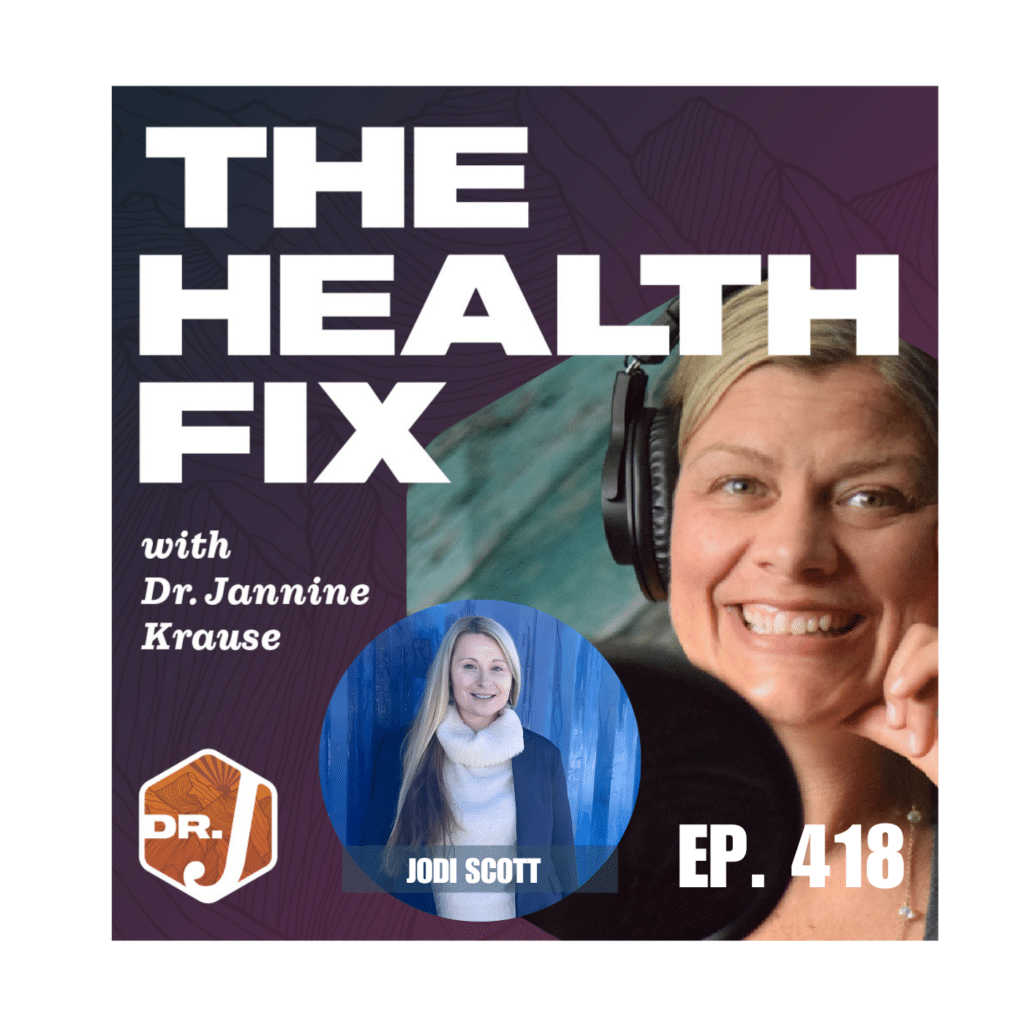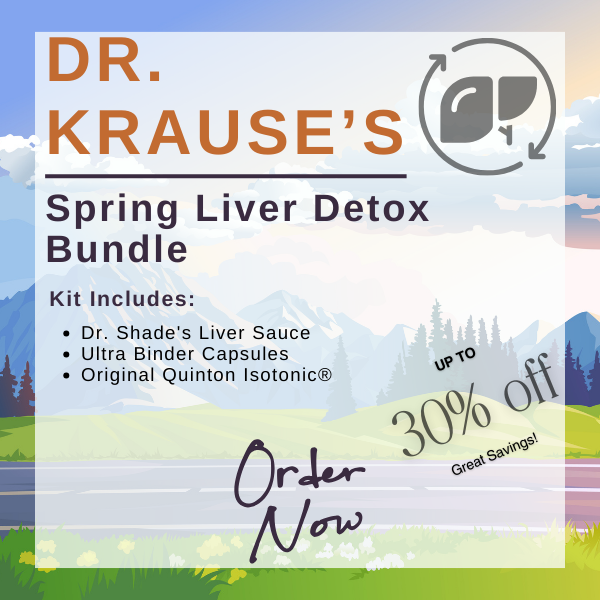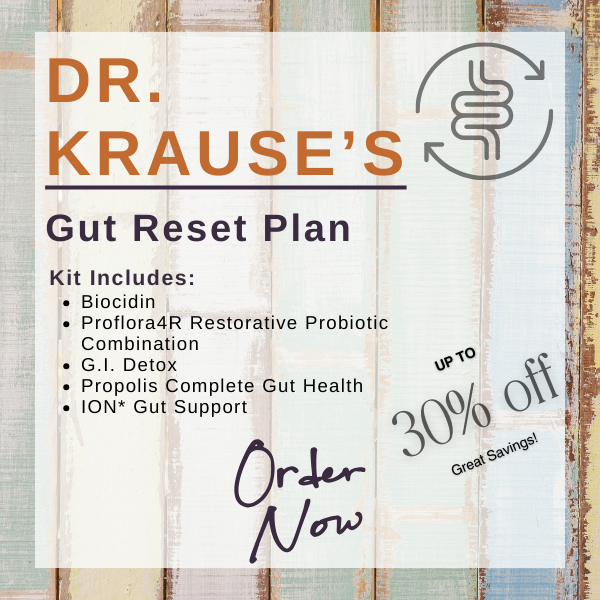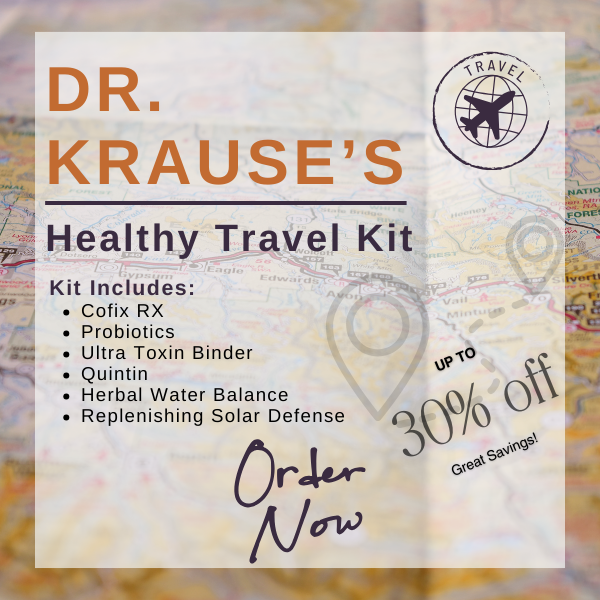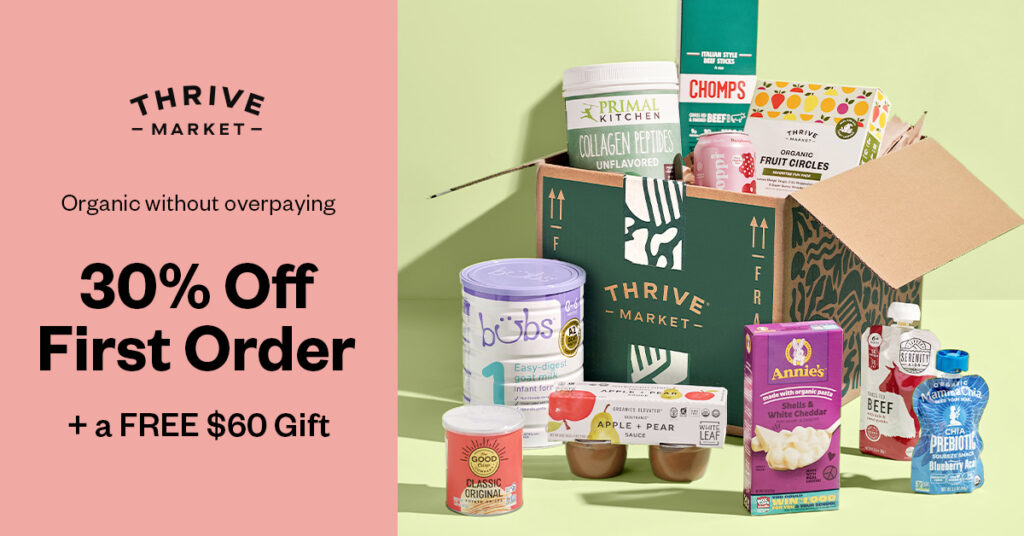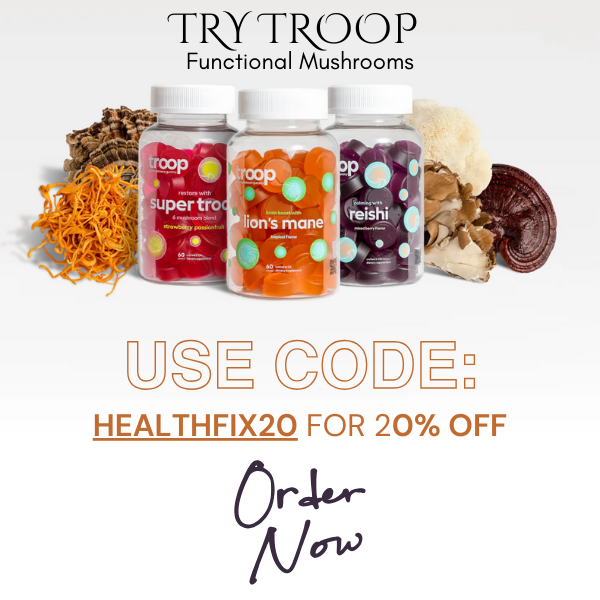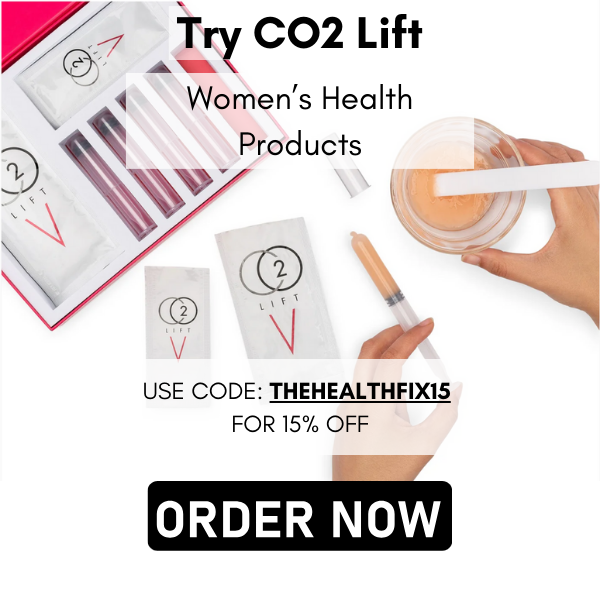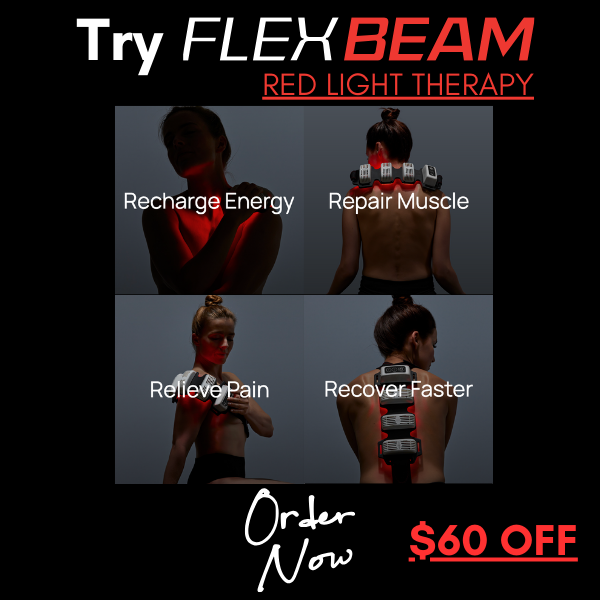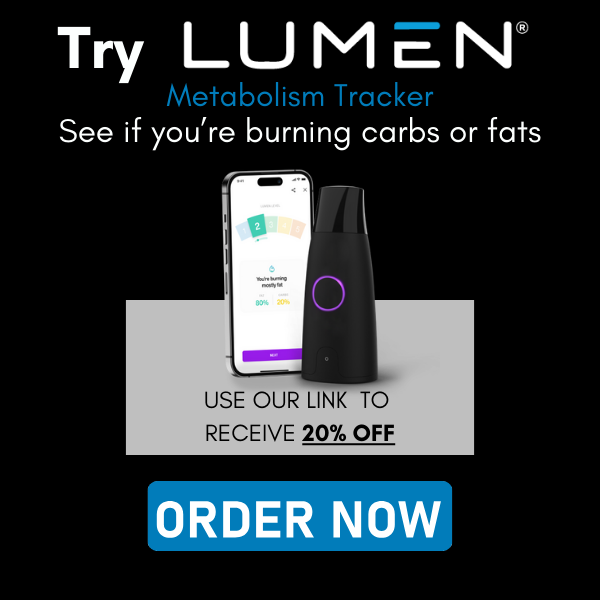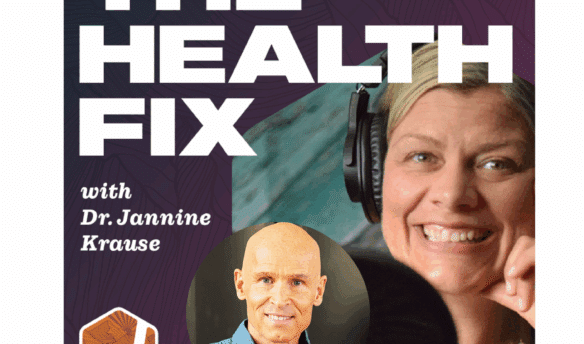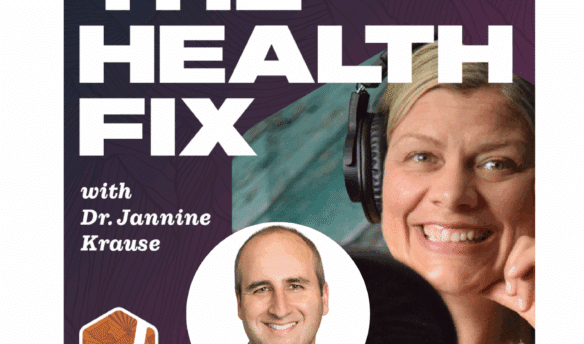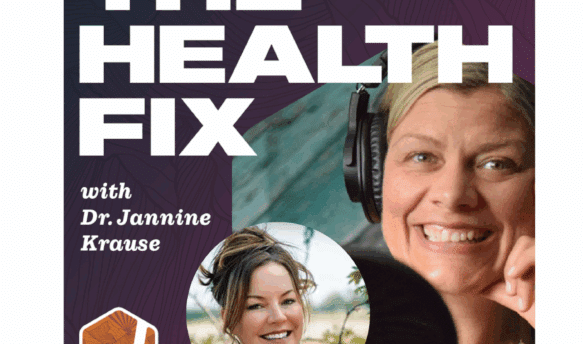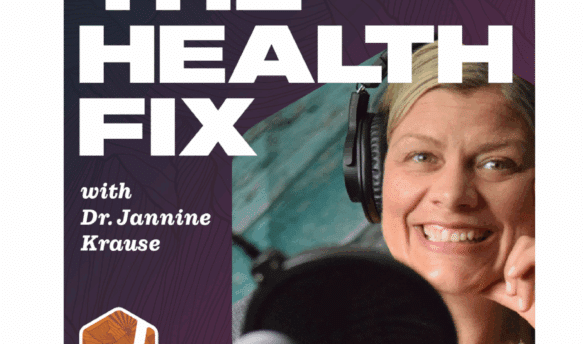When you think of first aid kits chances are you’re thinking of bandaids, an antibacterial ointment, perhaps a hydrogen peroxide spray, some sort of pain reliever, a hydrocortisone cream and even some anti-allergy medications. What if there was a plant based over the counter (OTC) product that could do all of those things and actually worked? Sadly mainstream marketing has posed plant based products to be inferior to synthetic topical first aid, beauty products and skin care in general when in fact there is data to show plant products work well and often outperform the competition! Jodi Scott the CEO and co-founder of Sierra Sage Herbs, the parent company of Green Goo, Southern Butter & Good Goo is on a mission to show that plant based products that can enhance well-being, improve skin health and promote self-care while addressing first aid needs too! Athletes rave about using her first aid salve, folks in the military are using her products, and the John’s Hopkins Scleroderma & Skin Condition Department is using her Green Goo products. In this episode of The Health Fix Podcast, Dr. Jannine Krause interviews Jodi Scott on her products and how they are helping people of all ages from wound care to eczema and intimacy.
Dr. Krause’s Protocols
Instructions Included
Traveling soon? Looking to detox or reset your gut? Try one of Dr. Krause’s Fullscript plans.
What You’ll Learn In This Episode:
- Why Green Goo’s First Aid Salve is replacing first aid kits for athletes & the military
- The unique process Sierra Sage Herbs is using to create products that work
- How herbs like calendula, plantain and chickweed are being used with essential oils to accelerate the skin’s healing response
- The effect of plant based products on cell telomeres and slowing down the aging process
- Why plant based products have the potential to offer regenerative and first aid unlike other over the counter products
Resources From The Show:
- Sierra Sage Herbs – Jodi’s parent company
- Green Goo – first aid, eczema and skin health products
- Southern Butter – intimate natural skin care
- Good Goo – CBD skin care line
- Instagram @GreenGooHelps
- Facebook @GoodGooHelps, @GreenGooHelps @Southernbutterhelps
Read MoreQuick LinksGet Embed PlayerShare on SocialDownload Audio File
Our Partners
Podcast Transcript
JANNINE: [Intro] (Uplifting music) Welcome to the Health Fix Podcast where health junkies get their weekly fix of tips, tools and techniques to have limitless energy, sharp minds and fit physics or life. Hey health junkies, on this episode of the Health Fix Podcast, I’m interviewing Jodi Scott. She is the CEO and co-founder of Sierra Sage Herbs. That’s the parent company for Green Goo First Aid, Southern Butter intimates, and the innovative Good Goo CBD line. Their mission centers on plant-based product development, and it’s guided by a unique full spectrum lipid extraction process that actually takes the plant material. They bring it in, they get it compounded, and then they make their products. It’s a unique process. She’ll talk about it in the podcast. But here’s the thing. Jodi and I get into talking about how we’ve been marketed to think that over the counter, otherwise known as OTC products, when it comes to first aid, need to have medicines in them. Chemicals, things of that nature because they work better. But here’s the thing. We have data that shows that plant-based products actually can work just as well. Jodi goes into it on the podcast today, and it’s really fascinating how people in the military are using her products. Athletes are packing wounds on the, you know, if they’re out mountain biking, they cut themselves. They’re packing wounds with her products. Good stuff here, and we’re talking about how her company is really creating products that work on the whole person while they’re addressing first aid and skin care issues. She’s even dabbled in pet first aid. So lots of great stuff here. Fabulous conversation on plants, herbs, and how plant-based medicine can really be of benefit and super effective in first aid and the intimate areas as well as your overall wellness of your skin. So let’s introduce you to Jodi Scott. Hey, health junkies. I’m Jodi Scott on from Green Goo, and we just had a fabulous fabulous talk before we jumped on because we’ve so much in common. So we can probably weave in a little of that hair. So yeah, folks from Colorado who are my long-term followers is going to be some fun stuff here. But Jodi, welcome to the Health Fix Podcast. I’m looking forward to talking about Green Goo.
JODI: It is awesome to be with you. Thank you for having me.
JANNINE: My goodness. So someone who’s got such an expansive business of yours, I was just mentioning when we first jumped on that, I learned about your company from some patients saying, “Hey doc, there’s this Southern Butter stuff. It was a game changer. I can’t live without it. You got to know about it.” So she brought it into my practice and I’m like, “Okay, checking it out. This is neat. All right, cool.” And then no joke. Like two weeks later, I was pitched to have you on the podcast and I’m like—
JODI: That’s crazy.
JANNINE: —”This has to be.” So guys, we’re going to tease you with the Southern Butter and what the heck that is. But first and foremost, I want to know from Jodi, like, herbs and making Green Goo products for folks from deodorants to eczema
creams. And I call them potions and lotions with all the love in the world because these are the things that I absolutely love. So tell us a little bit about how Green Goo was created and of course, you’re a former business name above that. I guess the umbrella above that. Like, how did it come to be? How did you get into herbs in the first place?
JODI: It was a wild ride. So I was pre-med, got my master’s in health psychology and at the time I was training resident physicians on the biopsychosocial model and just incredibly fascinated with mind body medicine and integrated medicine. And my sister was studying to be an herbalist and was a midwife. And my mom is a self-taught computer programmer, a website developer. We grew up in the military and she had to find a career where she could be mobile. And so this is before, obviously, people were building internet sites and that sort of stuff. So my mom was my first computer teacher in like the third grade. And so she started learning how to code and then very quickly learned how to develop websites and then she could make her business mobile. And so we’re sitting down and we’re looking at like my daughter was just born and I had a thing of me who was born in my hand and I’m like looking at these ingredients and I’m like, “Oh, this is really yuck.” You know, like we’ve been working in health food stores for all through college. We went to college in Austin, what the first whole food was. You know, so we were working there and we’re really excited about like whole foods and in clean health. And I found it so interesting too as I started looking more at the first aid space. I started to recognize that the natural consumer was willing to abandon their natural ethos because they were told that things like Neospor and Hydroportor’s Zone, Kalamine were the only products that could get the job done. And so they really made that massive exception in their life where everything else was super clean. So then I started digging in further into like the data and I was like, “Wow, like the conventional consumer, they don’t really care what the ingredients are.” They just wanted something that worked better. They found going to the doctor just an inconvenience. They wanted OTC to solve their problems. They had chronic skin conditions, but there was only acute skin relief options. Use this solution, but discontinuing five days if symptoms don’t relieve and it would also cause organ failure if you use it for longer than a certain period of time. And then there you are, you know, at your physician’s office, frustrated. And then you start getting into this more and you’re like, In at the time, topical therapeutics weren’t the fastest growing category. Now it is. But you started to see the exponential reporting of chronic skin conditions and this really underserved community. And so we thought, “Okay, first, can we make plant-based solutions that are superior to our OTC products that are on the market?” And then, “Oh, by the way, there’s no sustainability. You see all of these tubes being thrown in the landfill. You know, there is a relationship with plastic and body care and our health. And then, you know, and so this is where the Tins came in, which was kind of fun and aluminum being the most renewable resource at the time. It was very progressive to bring Tins into an OTC space. Looking at sustainability and then just some personality. You know, when people were kind of guiding us in terms of, you know, we’ll talk about women in Green Goo came from. They all wanted us to look like an OTC brand. And I said, “Well, let’s disrupt this space. Like let’s bring some personality. Now mind you, we want to register with the FDA. We want to be taken seriously from an efficacy standpoint. But let’s also bring some personality to the space.” And so that’s where green goo was born. When we were trying to decide what green goo’s name was going to be, everything had ointments or balm, you know, and nobody knew what a balm was. And the product’s green. And what’s super unique to this is that we make the ingredients ourselves. So we actually bring the plants to our manufacturing facility where we compound them. We take them through this unique extraction process. We yield high amounts of the medicinal properties from the plants. And then these unique blends are put into all of these products. So they’re actually plants in these products, hence it’s green. And we were like, “When I were just laughing and putting our fingers in.” And we were like, “And it’s goo. So it’s green goo.” [laughs] And so Green Goo was born.
JANNINE: It’s a great term because I mean, when I was playing with herbs and learning how to make my own formulations at Bastyr way back in the day, like literally that’s what happened, like calendula went in a high concentration and then you’re putting it in with some shea or coconut butter, you know, you’re gonna get a goo. [laughs]
JODI: You’re gonna get a goo.
JANNINE: It’s gonna be a slightly green tint to it. So no, I mean, it’s like the perfect name. And then of course, you know, having the tagline of plants, you know, with purpose, that of course is something that I think is incredibly useful to— for folks to see, right? Because we’re like, “Okay, we’ve got a purpose because the plants are helping us, but we also have your other missions underneath everything as well for the business.”
JODI: And you know, thank you for highlighting the plants with purpose because every plant in there has a purpose and they work well and synergistically together, along with the botanical profile and the full spectrum component to it. And you know, when we first started this, there was no, the plant-based revolution isn’t what it is today. And today, now, the plant-based renaissance is here, if you will, I mean, there’s plant-based water. But there wasn’t, you know, there wasn’t plant-based solutions 10 years ago. And so we had to really forge the path and talking to buyers and saying, “Hey, would you be willing to explore plant-based OTC product?” And the look on their faces was like, “What?” [laughs] So it’s really exciting to be a part of that now and really demonstrate that authenticity over the last decade through our process and our formula and efficacy.
JANNINE: Yeah. And I think that’s important because one of the things you mentioned before is we’ve kind of been brainwashed and it still happens to this day. I hear it from clients, you know, the, the neosporins and the, you know, there’s even something recently I can’t even think of what it was about the neosporin and the polymix or whatever we’ve taken stuff out because something you probably know better than—
JODI: Neomycin.
JANNINE: There we go.
JODI: There’s almost about 25% of the population that has an allergy to neomycin. It’s toxic to animals. And then we have antibiotic resistance that we’re dealing with which oftentimes can be more of an issue when you’re looking at wound care if it’s not treated properly. And if you look at some of these remote locations, we bring green goo to remote emergency medical care practices all throughout the world. And wound care is the number one issue in the medical care system. And then it, it cannibalizes medical care and then they can address, you know, more complicated issues that really need to be addressed. And so by the mere fact that we can bring a plant-based solution that is something that everyone can use is pretty, pretty great.
JANNINE: It’s huge, it’s huge. Because we, you know, we have been brainwashed to think we need the pharmaceutical versions of things. I have seen over and over again, MRSA, so Methicillin-resistant Staphylococcus aureus, for those of you guys are like, what’s MRSA? This is something that I’ve seen plants do better with than folks using things like Bactroban, which, which is a very common, ointment prescription antibiotic. And one of the things I was going to highlight that, that you had, you have even some products, you know, with the first aid. And so, so folks, we’re going to dive into a couple of the Green Goo products here because I find it so important because of the healing aspect. Like yes, people talk about Manuka Honey, we talk about silver. Yes, I use those, but the plants also have some amazing stuff here. So let’s talk, let’s just talk about the, the first aid salve, just with the calendula and the, in the year on comfrey. Let’s talk about that first and kind of how you guys came to come up with that one and then we’ll morph into the eczema and, and the chafing and all the other things that happened to our skin.
JODI: You bet. So originally we wanted to make a topical antiseptic, you know, so maybe you call it a Neosporin alternative. And we were looking at the data and we were seeing first and foremost that, that, and if you look at the first aid set, there’s a lot of different versions of, you know, a top, a topical antiseptic, some have pain relief, some have anti-itch, but it’s very segmented. And so, you know, when looking at this sort of minimalistic lifestyle that we want to help and say, clean up your first aid cabinet, you don’t need all of these things for some foremost. And so we decided to make our first aid solution, your first aid kit on the go. So now you had a topical antiseptic, but you have an anti-itch, you have something that slows down the bleeding and speeds up the healing. And so really our first aid formula, you can take this everywhere with you as a replacement for your first aid kit. And the stories we get are incredible from like the military taking it with them, athletes talking about like bicycle accidents that they’ve got into where they used to stick dirt into their gashes just to make it through their race. And they’re like, they just shove the green goo in there. It slows down the bleeding. They finish the race and then they go get their 18 stitches. And so, and what it is, it’s a beautiful, there’s like 13 or 14 herbs in this product, a beautiful botanical profile, very much the entourage effect. So you’re getting the terpenes and the chlorophyll and that full botanical profile with things like calendula, chamomile, yarrow, chickweed. And I love that you bring up calendula. And just probably our most favorite plant and you’ll find that across almost all of our products. I mean, it is like such nature’s gift. I mean, from a sustainability standpoint, it needs very little water and the more you harvest it, the more it grows. You know, so it’s incredibly sustainable. It’s beautiful to look at, you know, all the different oranges and yellows that it grows. But then what it has to offer from an inflammation standpoint and fighting bacteria, fighting, you know, viruses. It is a, you know, antiviral, antimicrobial anti yeast product. So it has a lot of different properties and in the various concentrations. So like in the baby products, we’ll do a lower concentration of it, but it’s really great for thrush. It’s really great for, you know, baby eczema. Then we can do a higher concentration for when we are dealing with severe eczema or a cut or a scrape where you need more, you know, aggressive antiseptics. And I don’t get too technical, but I’m learning more about the plants and telomeres and how interesting it is in calendula is one of those that there’s just more science behind reducing the inflammation, protecting the integrity of the telomeres and also providing some enzymes that help kick in the activation of regeneration of telomeres. And like that is fascinating. But going back to like what we feel every day and what we see and what’s visible, you know, it really has the anti-itch, the anti-inflammation. And then of course, got the chamomile, which is nice and calming, you know, yarrow, which just across the board, you know, has so many beautiful properties in terms of inflammation and antiseptic plantain. My daughter calls that the nature’s bandaid, you know, combined with chickweed can help slow down the bleeding. And then there’s very specific essential oils that are put in there that have not only antiseptic properties, but also like a aroma therapy. So my sister does Ayurvedic practice. And there is this notion of also having certain smells that can help stimulate, you know, your body to do certain things. And maybe it increases oxygen or increases flow in the skin there based on certain essential oils. And then the plant-based oils are really important. Those are really your lipid carriers. And there is a concept called like plant stem cell. And that is most productive when you have a lipid oil and plant-based oil that also allows hydration to come in. And hydration is not only important for our skin for obvious reasons, but goes back to the telomeres, right? Like it helps there. And so the plant-based oils in this product are very important to help bring those infuse herbs into your skin, into your epidermis, into your largest organ that they’re to protect you. That we just don’t give enough love to you. I mean, I think we’re just learning this beautiful skin organ that tells us so much. And yes, it’s a beautiful protector. But there’s a lot that we could be doing to nourish our skin to help in a more systemic way. And also it’s revealing to what’s going on internally, you know, to have this more holistic integrative medicine approach.
JANNINE: Absolutely. Absolutely. I mean, our skin, it is our largest organ for those of you who are listening and not familiar with this concept. But it has an incredible ability to take in and, you know, utilize a lot of things. And so knowing that you guys are very on top of how observability works, things of that nature, because I think a lot of companies don’t put as much effort into that aspect of things. And what happens in the body, what happens when we put things on our skin topically, which we could go on very dark rabbit holes of what happens with some of the chemical based things that we have out there. And so using alternative such as your products can be incredibly helpful. Now, one of the things I wanted to highlight too is that you have some pet products as well and a pet first aid, which I’m asked probably at least a couple times a week as to what to do for pets, because, well, even though I’m a naturopath, I dabble in helping advise, suggest, can’t diagnose or treat in terms of the pets. And so you even have a product for pets that obviously pets a lick things, things of that nature. Give us a little scoop about the first aid, bomb or topical that you have for the pets.
JODI: You know, it’s interesting. Because the pet first aid is actually what put Green Goo on the mat, because people were willing to explore a natural product for their pet before they were for themselves, which I find fascinating.
JANNINE: Yeah.
JODI: And there’s no over the counter safe solution for pets and for [inaudible]. Everything is toxic and to your point, they like to lick it. And so again, going back to that kind of thesis of, you know, the consumer wants to find something that’s available over the counter without having to go and in curfee’s going to their vet. And then they end up paying $3 for a petroleum based product and maybe a cone on their dogs head, right? And so what’s great about the plant or the Green Goo First Aid is that we took that same methodology of, okay, we need a topical antiseptic that’s safe for them to lick, because they’re going to lick it. But we also, dogs are incredibly like, I mean, they’re responsive. If it itches, they lick it. If it stings, they lick it. Let’s make sure that there are anti-itch anti-inflammatory properties to it. And so what we find is that, you know, one, the dog can lick it and likes it. But then two, because it has that anti-itch component, which is most of the time while they’re irritating it, they leave it alone. And so it’s incredibly productive, not only for cuts and scrapes, but hot spots. And there’s a lot of dogs that suffer from eczema and hot spots. And we have show dogs, which is really cute. I’m learning more about this. But like, you know, the ones that have like the little wrinkles and they have little scabs and they get like sores there. And, you know, they’re using it to soothe those sores. But then also like really hydrate their skin and have them look good for their shows.
JANNINE: How cool. How cool.
JODI: Yeah. And then we have an anti-inflammatory pain relief that’s specifically designed for pets. And you know, the testimonials we get are just incredible. Where we hear stories of, you know, 13 year old dogs that are just uncomfortable. And they start using our pain relief salve for them. And they’re like, they’re not moaning and they’re not uncomfortable. And, you know, I mean, end of care for our sweet little spirit guides. Isn’t easy, you know, it’s a difficult chapter. And so any relief that we can bring is pretty exciting.
JANNINE: Hmm. And I love it. That’s so funny how people will go towards the natural further pets and go, well, maybe if it worked for them, maybe I’ll try it on myself. We’re such wierd creatures in that department, which leads me to another really great question that I get asked every time. And of course, I’m curious to you had mentioned, you know, seeing your calendula and the beautiful oranges and yellow colors that come from the flowers. Where are the majority of your herbs grown? You know, what’s what where are you sourcing from? Give us a scoop a little bit in that department.
JODI: So in the early days, we grew all the herbs ourselves. Of course, now our products are registered with the FDA and they have to go through a very strict screening process with certificates of analysis and sourcing and so forth. But our herbs are now sourced from all over the world. We very specifically pick, you know, fair trade, organic. But for the most part, you know, we’re buying from, I mean, essentially everywhere. And there’s just certain regions and certain times of year that are better for it. And we do have still some, you know, US farms that are growing it. I would love to see, you know, more regenerative agriculture in the US and that’s something we really, when we find those vendors, we really lean in and support more. For example, our CBD oil that we source is, you know, regenerative. And I think there’s just a beautiful opportunity there. In addition to, we also look for being able to bring stimulating, excuse me, stimulating economic development in rural areas that would benefit from this. And what we found, philanthropic efforts are really important to us. And what we found often times is, you know, people with good intention will come into these remote areas and want to stimulate the economy to help the community. But it’s not usually a cultural fit. And oftentimes it can be more disruptive than it can be helpful. And what’s really unique about these herbs is that they can grow in remote locations, again, with very little resource. And so we’ve been able to also find some opportunities where we can stimulate that. We actually started a project in Afghanistan to help women refugees return back home. And we were able to teach them how to grow the herbs. And then also make the products and sell it in the local farmer’s market so that they could bring that, you know, bring that economy back to their home and build their home.
JANNINE: So, so cool. I was hoping you’re going to talk about that because I saw some blurbs here and, of course, highlighting the plants with purpose there, you know, concepts as well, just because you guys are doing such great, great outreach and how about that. I think that’s cool. Yeah, my big dream here living, you know, part time here in Wisconsin is to think about how the heck can I figure out how to grow some herbs here and create a different kind of environment. Of course, we have a huge, ginseng growing operation in central Wisconsin, but I’m also kind of like, what else can I grow and use?
JODI: You can.
JANNINE: You know, what are the kinds of things we play with? So of course, I highlighted a little bit and teased everybody about the Southern Butter business. And this is how I was first introduced to your company. And I would love for you to share the story of the intimate balms and and ointments. And I call them ointments. I mean, it’s not even an ointment, guys. It’s balms to me. It’s it’s it’s so cool. And you’re the— let’s let’s have you talk. I’m going to stop talking. Tell us about Southern Butter and how it came to to be and tell folks what it is and and the whole nine. Let’s let’s go there.
JODI: Well, funny segue, just to plant this in terms of my mom was also my first sex education teacher in grade school. So I think she would set the stage for us to be prepared for these conversations later, which was great. But really what started is our customers started calling us and asking if they could use green goo for intimate purposes.
JANNINE: Yeah.
JODI: And we thought, okay, prank call, you know, we’ll just table that funny. We’re in the business. We’re going to get all kinds of different calls. And then the calls became more consistent. And then friends and family started, you know, coming clean and talking about it. And so my sister and I were like, okay, there’s something here. We need to go look at the sexual wellness category. And again, we found the same parallels that we found in OTC, which was the natural consumer was willing to abandon their natural ethos because they assumed that what was the available was the only thing that could get the job done. And the conventional consumer was like, I just want something that works better. And of course, looking at this space, you’re going, wow, I cannot believe the amount of chemicals that are in this category that were not only putting on our bodies, but in our bodies. And then to kind of take it a level further, it wasn’t an inclusive category. It was very segmented to the male gender in terms of, you know, and then it was very focused on just the act of having sex.
JANNINE: Right.
JODI: And that was it. And then, you know, that wasn’t talking about the things that brought you into the bedroom or like, got things going or, you know, some of the challenges we’re having in the bedroom or the challenges as we’re with different medications that we’re taking or if we’re going, you know, changing our chemistry and peri menopausal, you know, postnatal, all the things. And so we said, can we make a plant-based solution that is inclusive when we bring the products to market and also, you know, really invite this whole like sexual celebration. And so that’s where Southern Butter was born. And we have bombs and oils and essential oils in the different sense that are in there or stimulation to have you. Like, some people get stimulated by relaxing. So we have a relaxing salve, you know, that really like calms the senses. And then there’s another one that’s very stimulating with like cinnamon and peppermint and kind of gets things going stand-away. And then, you know, we have some that are really like more aphrodisiac focus. And what’s fun is like, and it’s about massaging and touching and like all the things. And then we brought in the infusion so that’s rich with calendulas, rich with these plants. So like, your room smells amazing. Your skin smells amazing, you know, and it just like sets this like tone, which is just lovely. And we have a stimulating butter that a little bit goes a long ways. I used to have a bed and breakfast and I would leave it there for my guests in a paper, great breakfast talk. But it’s fun. It’s so fun. And we will actually be the first water-based lubricant that’s approved by the FDA. It was not tested on animals for our medical device certification. And that took us, I mean, close to seven years to get done. And the reason that was so important for us to maintain our cruelty free is because we were born in OTC. And most products in OTC are tested on animals. And so like other natural lubricants that are now in the space, they tested on animals because that was, you know, the only way to go to the market. And we really didn’t want to compromise that. So that’s something that’s really special, you know, for a certain better that we’re really proud of. And a little bit of a segue. I was talking to this doctor the other day and I was sharing with him, you know, how important it is because your tissue there is such a special tissue. And it absorbs a lot. So what you’ll find by using this be Southern Butter products and these different plants is it changes you. It softens your skin. It increases sensitivity. It helps with antifungal anti yeast, antimicrobial properties. And segue, believe it or not, your armpit is a very similar tissue to your genitalia area. And that was very important for us when we developed our deodorant because your armpit absorbs so much. And so that’s important as it relates to why we want to avoid so many ingredients in the traditional deodorants that we’ve been exposed to for the last few decades. But it also lends an opportunity for what more we can be doing with our armpit. I think I honestly believe that we’re going to find research in the next like five years that like our armpit is like the portal. And so we started putting like Ashwagandha, holy basil, vitamin C, Ginkgo Biloba, like why not put all these wonderful vitamins and herbs in there to continue to help with our, you know, homeostasis and helping our body with other nutrients. So it’s fun to look at the transdermal absorption throughout our body and look at what other opportunities we may be able to help, you know, ourselves internally.
JANNINE: Absolutely. That’s so cool. Yeah, I saw the deodorant with the adaptogenic capabilities and so I was like, oh, yeah, I mean, I personally in my evolution of being a doc, you know, I’ve now started to realize that most people unfortunately have trash guts. We’re not absorbing like we used to through the gut. And of course, we have the liver passing things of that nature. So the skin is kind of where it’s at. And when you get into the space of working with women and bioidentical hormone replacement therapy, ladies, we put the cream In the vaginal area because it uptake space. I don’t know. I haven’t even thought about doing armpits. It just no one ever mentioned it. But you know, my mind, I’m like, well, that could be interesting. You know, to see, but, you know, and I’m not recommending to do that for those of you who are listening on this podcast right now, I haven’t tested it out. Don’t do that yet. Well, Jodi and I will converse.
JODI: But let’s do some R & D.
JANNINE: Yeah. Yeah. Well, we’ll figure that out. But the point is is like you were saying that tissue that as we get older, things dry out. Even in the winter things dry out. If you’ve ever lived in Colorado for as, as Jodi and I have and then Jodi still does, if you’ve lived in Colorado through a winter, you are going to get cracks in your fingers, your feet. And you got to believe it down below some things get chafing too. And then we’ve got all the sports, right? If you ride a bike, and this is where the southern butter actually came in on the second round of my patients going, I have to use this to ride my bike. Otherwise, the chafing is real. And what she had said, Jodi was that just like you had said, it hydrated. It’s the perineum. It hydrated her vaginal tissue because she’s getting older, things are drying out and the more that we can do to hydrate the better. And so she was using it purely for that. And I was like, well, you know, you can use that for other things. And she was like, “Oh, oh”. And so I did see that you’re kind of coming up with a new line more for intimacy. It’s said on the website, more things to come. Give us a little scoop about what’s going on in your brain there.
JODI: We’ve got, wow, we’ve got quite a few things. One, sort of a segue into women’s health. My daughter’s 12, I really want to be celebrating puberty and looking at women’s health at a younger age. I feel like, you know, initially we just kind of started talking about menopause when we were looking at women’s health. And yet we’re women for a lot more years than just that time period. So let’s look at it that way. And then from an intimacy standpoint, you know, just more little things to play with in terms of inviting that overall, because I really like the term sexual wellness because in sexual health, because it’s been so taboo for so long instead of celebrating our sexuality. So really leaning into that more without giving away too much.
JANNINE: Okay. Fair enough, fair enough. I love that you’re incorporating the younger women and coming into their own aspect. Because I mean let’s face it, I don’t know, you know, it sounds like if you had mom as your instructor for me, it was basically, I got my period and I started freaking out that I was dying because no one had the conversation with me early enough as to what was happening. I unfortunately had got my period really early. And my mom was, my mom was a nurse, but she wasn’t ready to talk about it yet. And so, you know, having the cramps, having, you know, so many women have debilitating cramps, thinking of products that you could that are warm. And you could put above the uterus, I’m like, oh, man, that would have been a game changer for me.
JODI: Right. And I think, you know, historically, and I want to, you know, celebrating womanhood, I think it’s almost like we don’t really celebrate being a woman until menopause or pre-menopause. And so, finding ways to celebrate that sooner in our, in our beautiful gift that we bring to this world with this body we were born with, you know, what are we going to do with it? And, and, and celebrating that. So, I hope to have more of that embodied in the products and embodied in, you know, the messaging as, as we go forward.
JANNINE: I love it. I love it. I mean, you definitely have it moving forward with the Southern Butter and a lot of folks are embracing that. And I think, I think, you know, it’s one step, right? It’s, it’s moving a continuum. Now one of the other things that you have and something that I have recommended to folks, now that I was introduced to your products is the eczema side of things, you know, psoriasis, eczema, random, dermatological fungal. I’m going to call it fungal weirdness that we get. Tell us a little bit about the, your eczema line. Tell us a little bit about that, how you guys came up with it. Give us a scoop there because I think this is another thing that’s kind of overlooked as to, do I use a steroid? Is there another option? And I’d love to pair products like yours with the internal work to that we do.
JODI: And there’s so many tentacles to this product. One, I really attribute that this is the product that is the reason Green Goo came to be in the sense of, you know, I shared with you the process. And when we first went into manufacturing or was trying to find a manufacturer, no manufacturer would move forward with us because no one wanted to emulate the process. They were like, why don’t you just go get the pre-made extracts that are on the market and then put it in a container just like everyone else. And we’re like, the process is why this stuff works. And so we were at a, at a trade show. And this individual came by to try to sell us like lanyards and some, you know, like more promotional gear. And we gave him a tin of the Green Goo. He had expressed that his son had eczema. And so we talked through, you know, and at this time, John Hopkins had just reached out to us from the Scleroderma skin Condition Department because they also had patients who were using our product and getting results. And they’re like, who’s Green Goo? So we’re at this very time just kind of starting the conversations with them. And there’s Scleroderma Skin Condition Department. And so he leaves and he calls me back a week later and he’s like, Jodi, my son has never not been on his prescription eczema medication. We did this for a week. What used to take six months, if not longer, where we didn’t think we were getting relief, we got this in days. And what we’re seeing within a week, like again, we didn’t see it in months and months. And he’s like, I don’t know how we’re going to bring this product to market, but we’re going to find a way with you because we need to figure out how to do this because the world needs this. And so to this day, we were able to develop a dedicated line and a dedicated team and built this process at their facility, who where we now, you know, continue to manufacture with today. And John Hopkins continues to use this product and their Scleroderma and Skin Condition Department. And what I love about this product, so there’s, you know, the Calendula is really what we lead with. And it’s just incredibly high concentrations of that, along with the chamomile and so forth. But it, the anti-fungal anti-yeast antimicrobial properties to it, along with providing, so it’s not just bringing in sort of the systemic herbs that help come in and help with inflammation, but it also has like anti-itch properties to it as well. You know, there’s, there’s, when we, whenever we formulate, we don’t just look at like what’s causing it, but then what else would make the person feel more comfortable? And so there’s, there’s other herbs in there that help with redness, help with swelling. And what’s interesting about the body, right? Like, when you get a blister, it’s not that different than like, when you get a cold sore, right? It feels the same. So when we look at product development, we’re not only looking at like, great, we have anti-viral properties in our cold sore formula, but then we also know that the blisters are uncomfortable. We want the swelling to go away. So we bring in herbs that treat also what we physically see, because the body actually is pretty consistent in how it represents itself. And then our, our baby balm is a milder version of our dry skin formula. Babies often get eczema, cradle cap, you know, the red bumps and so forth. And so it’s a very similar treatment, just in the smaller, smaller dose. But it’s quite special. And the testimonials we get, you know, mom’s calling us saying, hey, you know, my son, you want to go to school. You know, his eczema was so bad on his eyelids that he was just miserable and he was embarrassed and he was a teenager. And how he’s confident again and he’s happy. And we have something that I’m not scared to use. So it’s really, it’s really rewarding to get that feedback.
JANNINE: Oh, I can imagine, I can imagine, especially when it gets to the eyelids. And that side of things, that’s, that’s, I mean, I’ve just seen some kiddos like, oh, my goodness, it is, it’s debilitating, especially when the eyes are so affected, they can’t even keep them open. So, that’s what I liked about the eczema stick that you have. And for application is that what you see to be commonly used or are folks kind of mixing it up or give us a little scoop on the stick and what, what brought you to create that?
JODI: The sticks are fun and it really was for like a portable and hands-free, you know, way to put it on. So you can just like, I mean, I, the repair product is my anti-aging product and I literally just put the stick on my nightstand and put it on my face when I go to bed like it’s a lip balm. And in the middle of the night, you know, if I go use the bathroom, I’ll put it on again because to your point, Colorado is so dry. The stick is just easy. It’s portable. You can take it with you everywhere you go. And then we do have an eczema oil that we just developed and that was very much, you know, part of John Hopkins saying, okay, it’s really great that we’ve got this solution for people to put on, you know, the hot spots, if you will. But the question that keeps coming up is, now how do I wash my body? Because again, you’re, that’s all great that you’re using the dry skin formula, but then you’re going in the shower and you might be using a wash that agitates your skin again. So we made a wash that’s an oil based that has a lot of those same plants in it along with very enriched with other essential oils that are specific to that inflammation. And it just smells great. My daughter’s actually allergic to chlorine. And so she is tortured in the summertime just tortured. And so we have found that the eczema oil, if she puts it on before she goes swimming. And then after she goes swimming, takes a shower with the eczema wash, she doesn’t get a rash. And we’ve never been able to find a solution until the last year when we launched the eczema oil. So you know, it has a lot of different functionalities. JANNINE: That’s interesting. You bring that up because I have wondered that about patients just in general from their tap water, the city water and the chlorine levels and all of a sudden random, you know, rashes like this.
JODI: It might be a connection there and we are on a well. And so that’s a, I mean, thank goodness for our daughter. Otherwise, she would have agitated skin right now.
JANNINE: That’s super fascinating to think about. To folks, if you have random skin stuff, you might want to try the eczema oil out and the wash and see, you know, if it can help you because skin is so, I mean, it’s one of the main, you know, second to gut stuff. It’s one of the other things that’s most common into my office. And we’re always trying to kind of sleuth out like, okay, what do we do here and here and kind of put it together? But it looks like, you know, just looking at your products and something I was thinking is like having, having a kit at home. And so I wanted to ask you, if you could have a kit at home and we’re looking at, you know, someone who is wanting to cover all the bases of, I get a burn. Maybe I get wind burn. I was thinking about that with the sticks in terms of being outside, getting some wind burn, thinking about what would be, you know, kind of like your top combination for someone thinking like maybe create a first aid kit or maybe I create something for gift for someone, just something of that nature. What would you put together? What would be your recommendation?
JODI: So I’ll take you through my Green Goo regiment for the day and how I use it. And then you can kind of pull from that with what’s valuable for everyone. So, you know, I start my day with my Green Goo Lip Balm because I live in Colorado and it’s like one of the first things I put on after I brush my teeth. Well, I better say that I use my Green Goo Tooth Pace first. Okay. Then I put on my lip balm. But then we have an oil face wash, which if you’ve never used an oil face wash, it is phenomenal. And at first it seems counterintuitive because your skin, you feel like it’s going to make your skin oily. Give it a couple days, your skin will balance out. But what we’re doing often times with the face washes out there is they have so many drying agents that it’s making our skin overproduce oil. And then so you’re going through this like dry, you know, oily dry, oily. Well, instead when you use this oil face wash, it pulls all the dirt out. It does what it’s supposed to do because oil is really great at getting the dirt out of your pores, but then it hydrates it and then leaves it so it’s like a good pH balance there. So I use that. Then I use my Green Goo Deodorant, which is, you know, fantastic. We have an immunity one. One that helps with cognition. And I say, you know, just enlightening. And then we have a calming one. So you know, pick your pick what your mindset is for the day. And then, you know, if you you always need first aid in your house. So you want to have your your green goo first aid because you never know if you’re going to have a cut of scrape, a bug bite. It’s one of those things that like once you have it, you’re like, where have you been my whole life? Like I didn’t know I needed you. I mean, most of the time you’re using it, it’s more to solve inconveniences rather than it’s going to, you know, take you to the emergency room. If you’re someone that suffers from chronic dry skin or eczema, you always want to have your dry skin formula in the house. Every skin type is a little bit different for me. I like the repair. It’s rich in aloe vera and blue chamomile. So it’s incredibly hydrating. I do a lot of hiking in Colorado. So I get exposed to the sun. So I really appreciate hydrating with the repair. That’s something that I’ll use throughout the day and definitely before I go to bed. And then one of my favorite ones that, you know, before you go to bed is the Free to Breathe. So this is your VIX vapor alternative. And when we were making this, what we found so interesting is that oftentimes people are using this not because they had a cold, not because they had allergies, but because they were told that if they put it under your feet before you go to bed, it was going to boost their immune system and help them sleep better. But the vapor rubs on the market have no anti-viral or sleep properties to them. So we made a vapor rev that has sleep and anti-viral properties to it. So I kid you not whether psychosomatic or not. I put this under my feet every night before I go to bed and I think I sleep better. So there you go. There’s your, you’re like, you know, 24 hour regimen.
JANNINE: I love it. I love it. I mean, guys, I wish you could see Jodi’s face right now. I mean, great skin for living in Colorado. I know mine took a beating when I lived there. And it’s definitely something that, you know, as we get older to something to be thinking about. And I don’t know if you found this, this Jodi. But in my opinion, I’m starting to find that, you know, we have all these fancy anti-aging serums and things that are on the market. But really, it seems that if we just keep it simple and give our skin the hydration it needs, we tend to do better.
JODI: You do. And you know, the sneaky thing that happens with a lot of the expensive chemical rich products that are on the market is they, there are certain ways that they can make your skin look plumper for a minute, right? So you have your semipermeable membrane of your skin. And there’s a science behind that in terms of the pH on either side, right? Well, they can give you that temporary look. And then within three days, your skin is depleted again because now the hydration came in and then the hydration and all the other things went out. And now you’re stressing your skin again and we’re back to the telomeres, right? So what’s great about super simple, like Green Goo, for example, is that, I mean, in theory, this goes against capitalism, but the more you use it, the less you need it. And the more hydrated your skin is and the more nourished your skin is and it’s simple and it’s affordable. I mean, I have the most low maintenance body care, oil, face wash, repair every night and that is it. And I hear of all these people with all these regiments and I’m like, it’s all you need.
JANNINE: Yeah, the more the more I do this, the more I’m like, it seems like glasses more. And I keep looking at everyone’s skin who’s doing the less is more of a process and I’m like, there’s something to this.
JODI: There’s something there. Yeah,
JANNINE: There’s something there. And I know a lot of people kind of freak out about oil based, you know, topical washes and different things because it’s like, oh, it’s going to clog my skin. But yeah, I’ve found the same thing to be true, like the more that you use the oil, the actually it shifts things.
JODI: Even my 12 year old, I mean, their girls call it, you know, their miracle oil. They use it to get their makeup off. There’s again, the calendula antifungal anti yeast antimicrobial properties. You’ve got rosemary, you’ve got lavender. Lavender is a beautiful antiseptic. So you can put some great plants in that lipid carrier that have those antiseptic properties that can help with things like acne and cleaning your pores while also maintaining hydration. So it’s, yeah, it’s, it can be done.
JANNINE: It’s huge, It’s huge. The other thing I did want to mention, circling back to when we had talked about the products for intimacy and the products for just as I would call it down below, taking care of the vaginal area, you had mentioned that you have the water based product because, and I want to get your thought process and what you know about in terms of what you can say about your product. When we’re looking at oil based products versus water based products, we have an interaction with condoms and things of that nature. So safety is with condoms on the water based product.
JODI: So historically, water based products are the ones that are compatible with latex and condoms. And those are the products to date that have gone through the expensive, you know, it’s, it’s a medical device certification that you have to get in order to have a lubricant on the market. And there’s a number of tests, one of them being a condom test, some of its skin irritation and so forth. And traditionally, and just based on science, waters better than oil for latex. However, historically, the oils that have been used in these studies have been petroleum based or paragon based. So although I would not recommend using oils for condoms, stick to water based, I hypothesize that you may have a different experience with plant based oils. The test has just not been done yet. So we first moved forward with the water based solution first and foremost. But when the budget lends itself, we have an interesting formula that appears to be compatible with latex, but hasn’t been tested yet.
JANNINE: So this might be what is coming on the horizon folks. Hmmm….Well, I wanted to ask about that because it is something that, you know, folks will ask me quite often, like, what can I use with condoms and what’s not going to dehydrate me too. And so obviously water based versus looking at alcohol based and all the other things that the guys you really do need to read your labels. This is important stuff, which is why the Green Goo products are so appealing to me because we don’t have all that harsh junk in there.
JODI: Well, what’s interesting too in learning this about the OTC space, you only have to report the active ingredients and many of the inactive don’t have to be on the label. We put the inactive on the label because we want one full disclosure. But then two our inactive also have active components. They’re just not recognized by the FDA is having active, you know, effects. So we can only call out the herbs in active ingredients that the FDA has recognized. But arguably, you know, the other inactive ingredients have an impact and we’re seeing more studies being done, right? So that library that the FDA is approving and recognizing is growing. But it’s pretty scary that there’s a lot that we put on our skins and ingest that if it’s below a certain level, it’s not on the label. And if you’re someone who has allergies, I mean, we’re seeing this with like peanut allergies or dairy allergies. There’s more disclosures that are happening, but I’ve worth just scratching surface.
JANNINE: You know, this is this is a topic that I feel like is is incredibly important to share with folks because of how it impacts our health, how it impacts skin, how it impacts every single bit of our functions. And it’s really, you know, part of the evaluation of what you’re using and getting to be very familiar with knowing your products, knowing the sourcing, knowing how they’re packaging. And it sounds like you guys have kind of went down that process in every aspect of it.
JODI: It feels very full circle, which is great. You know, my roots being in health psychology and premed and psychonuro immunology. And at the time then, you know, integrative and holistic medicine wasn’t a thing. You know, there was naturopaths. But I mean, I’m training resident physicians on the biopsychosocial model, meaning, hey, you know, doctor, let’s look at the patient as more than just for prescribing a medication. You know, what are the hurdles? What’s inhibiting them? Let’s talk about diet. Let’s talk about it. And I love that you’re talking about like the gut and the skin, like the relationship that they may have. And so, you know, I feel like it’s really a fun time for us at Green Goo and taking this holistic approach to our products and the essential oils and the smells and the mindset. And, you know, we have a gratitude app that we just launched and really like, like, inviting everyone to take that position in their health and their mindset and this holistic perspective so that they can just have a better quality of life and a better impact on the environment, better relationships, you know, more longevity. And so, it’s an exciting time, I feel like there’s a lot more research and an appetite, the consumer and humans in general are just awakening to this information and it’s less of forging a path. You know, we’ve been forging a path for a long time. We talk about like, you know, the first person who brought kombucha to the market. And I was like, what’s kombucha? And now it’s like, there’s all kinds of kombucha. So, you know, the same thing in just the plant-based renaissance, you know, I think it’s here, which is really special.
JANNINE: No, it’s awesome. You guys are doing great stuff. I love the whole body approach and the well-being approach because so many companies will take it as like much like the medical field does. We compartmentalize and taking it to the full spectrum of how someone, you know, can take care of things from emergency situations to skin care and beauty, to intimacy in the bedroom and the whole nine. I mean, it’s a great way to, I think, approach care as a whole and just creating such a great brand where folks can recognize you guys as something that they can move through with their generations, but also, you know, as a whole. So, Jodi, gosh, great stuff! I would love for you to share with folks everywhere they can find and your product and interact, obviously not all the stores that would take us for four hours, but how can they find you guys, your website, Instagram, socials, all the things. How can they interact with you guys?
JODI: So, the best way to get all the goodies is to go to greengoo.com. You’ll find Southern Butter there as well. We do have southernbutter.com. So, we do have both sites. Of course, everything is available on Amazon as well. You’ll find us in a variety of retailers, whether it’s pharmacies and natural food stores and grocery stores, but if you want the breadth, you know, going to the website is the right place. And then, of course, you can interact with us on social. Greengoo helps. So, that’s also Instagram, Facebook, YouTube. And please stay in touch. I love hearing the stories. That is what gets me up every day and fighting this good fight. And I can’t tell you how many customers email me saying, “I’ve never tried a natural product before and this is the first and it works.” And now, their whole world has opened up to the possibilities. So, you know, I invite you to explore the possibilities and I hope we can have a positive impact in some aspect of your life.
JANNINE: I have no doubt that you will. And I mean, like I said, I’ve had people coming into my office with your product showing me, “Hey, check this out. What do you think, Doc? This has changed my life.” And so, I mean, you don’t, even as a natural, I don’t get many folks bringing stuff in and telling me, you know, this stuff is amazing. You got to learn about it, you know. So, that speaks volumes for me as a whole. So, nevertheless, Jodi, great stuff looking forward to all of your new innovations as time goes on and, gosh, can’t wait to share this podcast. Thank you so much for coming on.
JODI: Thank you. I’m so enjoyed.
JANNINE: [Outro] (upbeat music) Hey fellow health junkie, thanks for listening to the Health Fix Podcast. If you enjoyed tuning in, please help support me to get the word out about the podcast. Subscribe, rate, and review, and just get that word out. Thanks again for listening.
